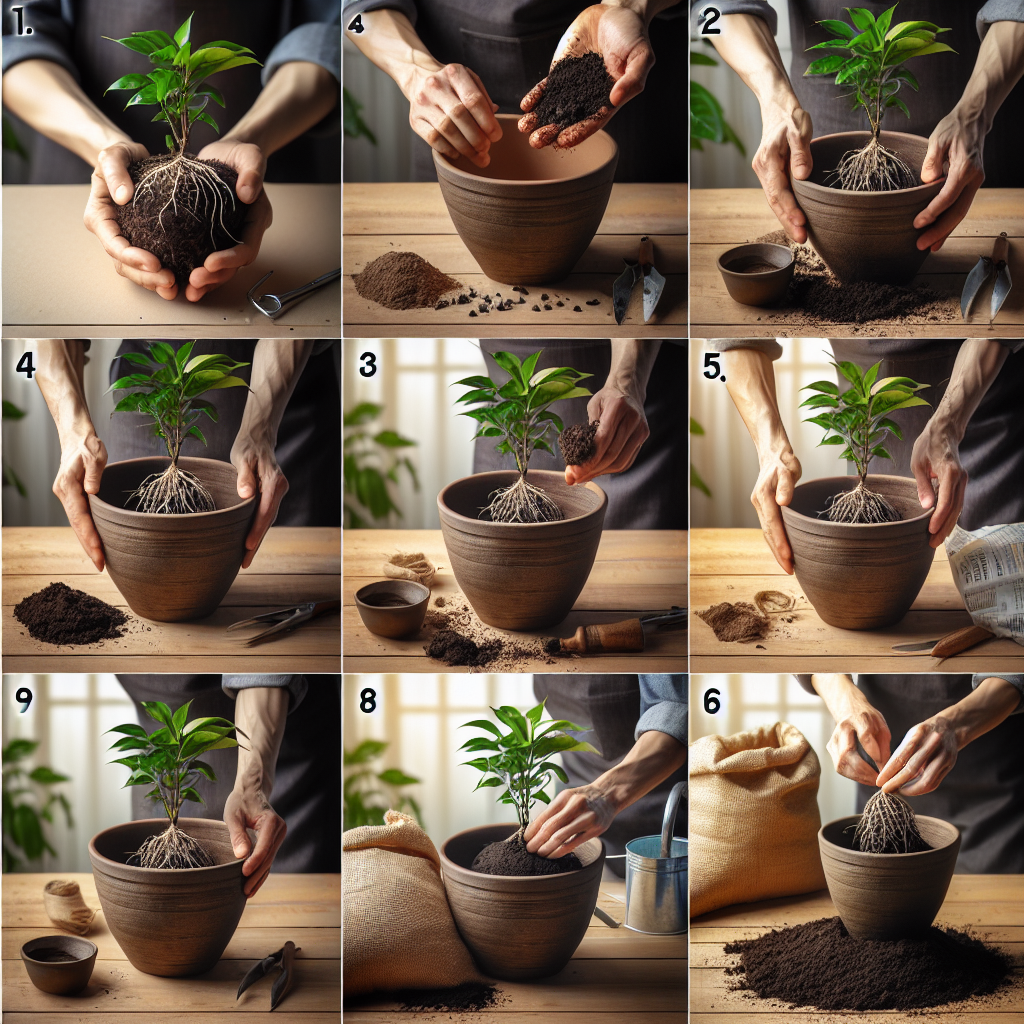
How to pot a plant
Ultimate Guide on How to Pot a Plant
Potting a plant is an essential skill for any gardening enthusiast or anyone looking to bring some greenery into their home. Whether you are starting from seeds, cuttings, or already potted plants, knowing how to pot a plant properly will ensure your plant thrives in its new environment. This guide will provide you with everything you need to know, from selecting the right pot to understanding the best potting techniques for different types of plants.
Choosing the Right Pot
The first step in potting your plant is selecting the appropriate pot. Here are key factors to consider:
- Size: Choose a pot that is slightly larger than the current one. A pot that is too large can lead to overwatering and root rot, while a pot that is too small may stunt growth.
- Material: Pots come in various materials such as clay, plastic, and ceramic. Each has advantages and disadvantages, such as drainage properties and aesthetic appeal.
- Drainage: Ensure your pot has drainage holes at the bottom to prevent water from pooling and causing root damage.
- Style: Consider how the pot will fit in your home or garden's overall aesthetic.
Gathering Your Tools and Materials
Before you begin potting, gather all the necessary tools and materials. Here’s what you’ll need:
- A suitable pot with drainage holes
- Quality potting mix or soil
- Gardening gloves
- Watering can
- Transplanting tools (trowel, small shovel, etc.)
- Optional: Fertilizer or plant food for added nutrients
Preparing the Potting Area
Set up a clean workspace to make the potting process efficient and enjoyable. You can use a kitchen table, a potting bench, or even the ground in your garden, as long as it’s stable. Laying down newspaper or a tarp can help catch any mess while you work.
Choosing the Right Potting Soil
The type of soil you use can significantly impact your plant's health. Here are some factors to consider:
- Draining capacity: Ensure the soil mix has good drainage. Look for mixes with added perlite or pumice.
- Nutrients: Depending on your plant's needs, some may require a specific nutrient-rich mix.
- pH level: Some plants prefer acidic, neutral, or alkaline soil. Check your plant’s needs prior to potting.
The Potting Process
Now that you have everything ready, let’s go through the steps of how to pot a plant.
- Remove the Plant: Gently tip the old pot and carefully slide out the plant, holding it by the base. If it’s stuck, you can lightly squeeze the sides of the pot to loosen the soil.
- Examine the Roots: Look for green, healthy roots. Trim any brown or mushy roots with clean scissors to promote healthier growth.
- Add Soil to the New Pot: Place a layer of potting mix at the bottom of your new pot. This should typically be around one-third the depth of the pot.
- Position the Plant: Center the plant in the pot, filling around the roots. Ensure the soil line is at a similar level as it was in the previous pot, usually just below the rim.
- Fill with Soil: Add potting mix around the sides of the plant, pressing lightly but not too hard, allowing air pockets for drainage.
- Water Thoroughly: After potting, water the plant until water drains from the bottom. This helps to settle the soil around the roots.
- Add Mulch (Optional): For plants that require it, add a layer of mulch at the top of the soil to retain moisture and suppress weeds.
Post-Potting Care
After potting, your plant requires some care to adjust to its new home. Here are some tips to ensure it thrives:
- Location: Find a suitable spot that provides the right amount of light. Some plants may prefer shade, while others will thrive in full sun.
- Watering: Keep an eye on the moisture level. Water only when the top inch of soil feels dry to avoid overwatering.
- Humidity: Many indoor plants benefit from increased humidity, especially tropical varieties. Mist them occasionally or use a humidity tray.
- Fertilizing: Use a balanced fertilizer about a month after potting to promote healthy growth.
- Periodic Repotting: As your plant grows, it may need to be repotted again. Keep an eye on its growth and root development.
Common Mistakes to Avoid While Potting
Even seasoned gardeners can make mistakes when potting their plants. Be aware of these common pitfalls to protect your plants:
- Using a pot that is too small can hinder growth.
- Neglecting to check for drainage holes can lead to root rot.
- Overpotting can result in overwatering and fungal issues.
- Using garden soil instead of a potting mix can result in poor drainage.
- Not properly trimming damaged roots can stress the plant.
Benefits of Potting Your Plants
Potting your plants has several benefits that extend beyond aesthetics. Here’s why you should consider this essential gardening skill:
- Control Over Growing Conditions: Potting allows you to manage soil quality, drainage, and light exposure.
- Mobility: Potted plants can be easily moved based on seasonal changes or indoor conditions.
- Enhanced Growth: Proper potting techniques can promote healthier and faster growth.
- Protection Against Pests: Potted plants are less susceptible to pests that lurk in garden soil.
Conclusion
Learning how to pot a plant is a rewarding journey that enhances your gardening skills and enriches your living space. By choosing the right pot, preparing the soil correctly, and following the potting process, you can give your plants the best chance for success. Whether you’re a novice or a seasoned gardener, these tips will help you cultivate beautiful, thriving plants that will bring joy to you and your surroundings.
Remember, gardening is a journey, and each plant you pot is an opportunity to learn and grow. Happy gardening!
By Guest, Published on October 20th, 2024